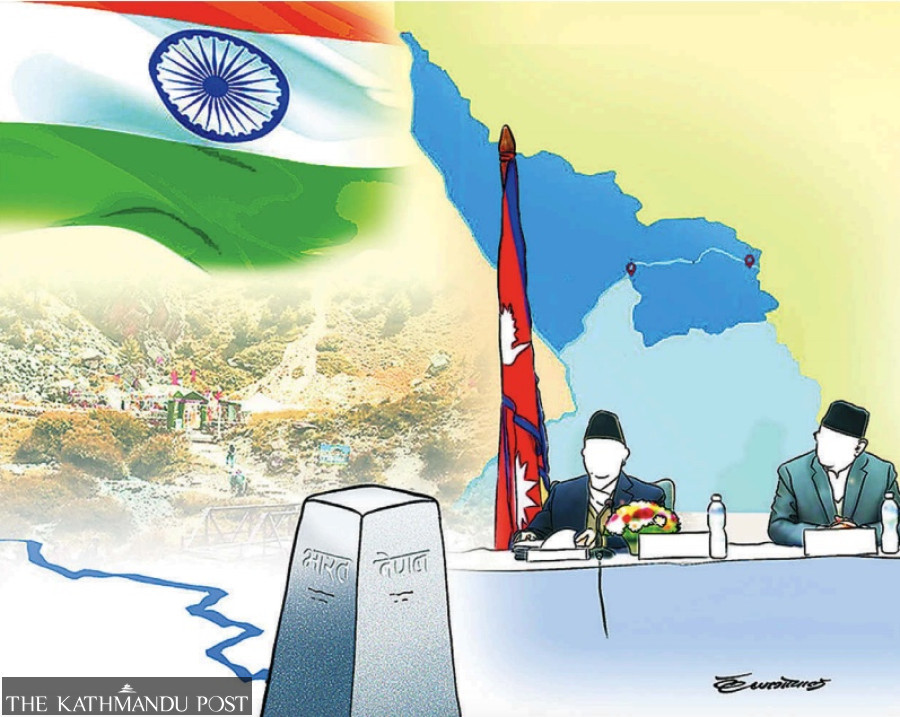Columns
Prioritise cooperation over conflict
India should not be too suspicious of Nepal’s relations with China and other Western powers.
Lok Raj Baral
The Nepal-India relationship is complex, wide-ranging and deep, making it difficult to fathom. That is why, despite a long apprenticeship in bilateral relations, I consider myself a novice on the subject.
Sometimes, our limited knowledge creates misunderstanding and distrust even if the relationship remains intact. For the past 60 years or so, some people have tried to define the Nepal-India relationship in their own emotional ways but have failed to make any dent without India’s wish.
Their concern is understandable when seen from the perspective of broad principles of sovereign equality, territorial integrity and peaceful coexistence, forgetting that inter-state relations are guided more by pragmatism than principles. For any country, national interest is supreme while conducting foreign policies. Most politicians and intellectuals driven by emotions forget that the conditions surrounding them are more deterministic than their feelings. Here comes the question of geo-politics, geo-economics and geo-strategic contexts.
The Nepal-India relationship since the Treaty of Sugauli continues to define both limitations of powers and the relationship pattern. Even if some minor adjustments or changes occur, the substance and nature of bilateral relations remain the same. For some Nepalis, symbols matter more than substance, which is vital for conducting bilateral ties. Even then, both countries do not deviate from the main course of the unchanged relationship. India, too, has not departed from conventional policy by trying to operate within the same parameters as the old rulers. Even if the situation and context changed, the basics of the relationship remain the same.
India does not like to disturb the structure of the relationship, relating it to its larger national security issue. It seems that even in the future, apart from some minor adjustments, it is unlikely to be drastically altered. Indians think opening the 1950 Treaty is like opening the “pandora’s box” and, hence, needs to be cautiously handled. Without being on the firm ground of reality, Nepalis will experience more woes. Knowing the implications and given the limited strategic autonomy, King Mahendra, apparently a die-hard nationalist, also didn’t raise the issue of the 1950 treaty. Still, policy measures adopted by the royal government and India have led to the erosion of some treaty provisions.
Coming close on the heels of the continuity of the relationship, the former foreign secretary and Indian ambassador to Nepal, Shyam Saran, said at a talk programme recently, “There will be more continuity than departure in India’s foreign policy in coming days–in rhetoric and style”. Then what alternative approach can Nepal take? I think focusing on the country’s development, projection of good governance and image by showing the ability to prosper and make people confident should be the strategy. If all-round development takes place by raising people's life standards, national confidence and maturity would grow, eventually leading to better cooperation with the immediate neighbours. The status of a nation is not raised by too much politicisation of relationships, as we have been witnessing for over six decades. Nor is foreign policy conducted through an emotional approach alone.
Some developmental activities and formal and informal channels used by both sides to sort out immediate problems arising from time to time can measure how the two countries have stabilised bilateral relations and cooperative endeavours since the 1950s. Regime changes have not at all affected the continuity of the developmental process.
Today, the development pace is faster than before. The political environment, irrespective of governments, is favourable, as parties and leaders seem to have understood the significance of development despite their subjective views on various issues. Now, Nepal and India have reached an understanding of purchasing 10000 megawatts of electricity by India and facilitating Nepal’s use of the Indian corridor for power sale to Bangladesh.
Since Nepal and India are two separate nations politically and historically, civilisational commonalities do not always work when the question of nation-state arises. Therefore, it is natural that some divergent approaches to events and developments are noticed not to the extent of damaging the structure and dynamics of bilateral relationships. Some issues are perceived differently by the elites of the two countries. For example, some patches of the border often trigger controversy. The two governments have claimed that 97 percent of the border problem will be solved if both sides officially agree. But Nepal is not prepared to agree unless other disputed territories such as Sushta, Kalapanri-Lipulekh and Limpiadhura are settled. Sushta’s problem could have been settled long ago as it is not serious from an Indian security point of view.
The Kalapani issue is complex because India considers it settled, but it contrasts with Nepal’s claim that goes far beyond the existing border. Since the newly adopted map called chuche naksa (pointed map) that shows the border up to Limpiadhura has already been passed by the Nepali Parliament by a two-thirds majority after reaching some sort of national consensus, it has become more complex. India reacted to Nepal’s action as a unilateral “cartographic assertion”, adding that the lands claimed by Nepal belong to India. The issue has become more complicated because of the long Indian rule (bhogchalan) and Nepal’s new claim as its territory. In addition to such complex issues, minor problems such as waterlogging in some parts of the Tarai, inundation, floods and trade deficit reduction are nagging. However, the issue of balance of trade entirely lies with Nepal’s capacity to enhance production and make Nepali products market-worthy in India and elsewhere. Only then can Nepal expect India’s cooperation to facilitate Nepali products to enter the Indian market.
Mutual trust and confidence on both sides are essential to resolve ensuing differences, big or small. Moreover, perception, rather than reality, gives grounds for distrust. India should not be too suspicious of Nepal’s relations with China and other Western powers, especially the US, as it is armed with leverage over Nepal because, even if it wishes, the latter cannot cross the Rubicon due to various compulsions.




 11.12°C Kathmandu
11.12°C Kathmandu















